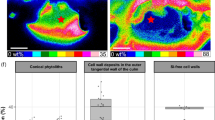Abstract
In accordance with the set of species-defining chemical elements in minerals, n-component systems (where n = 1, 2, 3, 4, 5, 6, 7, 8, 9, 10) for all mineral species (4952) known to 2014 inclusive were distinguished. Seventy chemical elements have been established to be species-defining, which are distributed by mineral systems as follows: 1 (29), 2 (62), 3 (68), 4 (61), 5 (61), 6 (55), 7 (49), 8 (38), 9 (28), and 10 (19). The number of mineral species in which certain chemical elements are species-defining has been specified. Oxygen (4041), hydrogen (2755), silicon (1448), calcium (1139), sulfur (1025), aluminum (960), iron (917), sodium (914), copper (616), phosphorous (580), arsenic (575), and magnesium (550) are the leading elements in minerals in the Earth’s crust. It has been found that the most species-defining elements are normally distributed by mineral systems. The distributions of mineral species in various systems from the Khibiny and Lovozero, Kola Peninsula, Russia; and Mont Saint-Hilaire, Quebec, Canada peralkaline plutons were compared and the characters of species-defining element distribution in these localities were compared. Si, Na, K, C, F, Ti, Ce, Zr, Nb, Sr, and Th are “excess” species-defining elements in minerals from the plutons compared to the total number of mineral species, whereas S, Cu, Pb, Cl, B, Te, Ag, Ni, and Be are “scarce” elements.
Similar content being viewed by others
References
Akopyan, A.A., Khimicheskaya termodinamika (Chemical Thermodynamics, Moscow: Vysshaya Shkola, 1963.
Bulakh, A.G., Isomorphism and choice of the mineral’s name, Geol. Ore Deposits, 2010a, vol. 52, pp. 612–613.
Bulakh, A.G., End members, dominant valence, and identification of minerals with mixed composition, Geol. Ore Deposits, 2010b, vol. 52, pp. 614–617.
Bulakh, A.G., Zolotarev, A.A., and Krivovichev, V.G., Struktury, izomorfism, formuly, klassifikatsiya mineralov, (Structures, Isomorphism, Formulas, and Classification of Minerals), St. Petersburg: St.-Petersburg University, 2014.
Christy, A.G., Causes of anomalous mineralogical diversity in the Periodic Table, Mineral. Mag., 2015, vol. 79, pp. 33–49.
Dolivo-Dobrovolsky, V.V., Dominant valence, minals (end members) and reciprocal systems, Geol. Ore Deposits, 2010, vol. 52, pp. 618–623.
Hatert, F. and Burke, E.A.J., The IMA-CNMNC dominant-constituent rule revised and extended, Can. Mineral., 2008, vol. 46, pp. 717–728.
Hawthorne, F.C., The use of end-member charge-arrangements in defining new mineral species and heterovalent substitutions in complex minerals, Can. Mineral., 2002, vol. 40, pp. 699–710.
Hazen, R.M., Papineau, D., Bleeker, W., Downs, R.T., Ferry, J.M., McCoy, T.J., Sverjensky, D.A., and Yang, H., Mineral evolution, Am. Mineral., 2008, vol. 93, pp. 1693–1720.
Hazen, R.M., Bekker, A., Bish, D.L., Bleeker, W., Downs, R.T., Farquhar, J., Ferry, J.M., Grew, E.S., Knoll, A.H., Papineau, D.F., Ralph, J.P., Sverjensky, D.A., and Valley, J.W., Needs and opportunities in mineral evolution research, Am. Mineral., 2011, vol. 96, pp. 953–963.
Krivovichev, S.V., Complexity, diversity and evolution of the mineral world: from Vernadsky to the present day, in Vernadskii i XXI vek: geosfera, biosfera, noosfera, i simmetriya (Vernadsky and XXI Century: Geosphere, Biosphere, Noosphere and Symmetry) Sofia: St. Ivan Rilski, 2013a, pp. 26–32.
Krivovichev, S.V., Structural complexity of minerals: information storage and processing in the mineral world, Mineral. Mag., 2013b, vol. 77, no. 3, pp. 275–326.
Krivovichev, V.G. and Charykova, M.V., Klassifikatsiya mineral’nykh sistem (Classification of Mineral Systems), St. Petersburg: St. Petersburg University Press, 2013.
Krivovichev, V.G. and Charykova, M.V., Number of minerals of different chemical elements: statistics of 2012 (a new approach to the old problem), Geol. Ore Deposits, 2014, vol. 56, pp. 553–559.
Kukharenko, A.A., Orlova, M.P., Bulakh, A.G., Bagdasarov, E.A., Rimskay-Korsakova, O.M., Nefedov, E.I., Ilyinsky, G.A., Sergeev, A.S., and Abakumova, N.B., Kaledonskii kompleks ultraosnovnykh, shchelochnykh porod, i karbonatitov Kol’skogo poluostrova i Severnoi Karelii (geologiya, petrologiya, mienralogiya, i geokhimiya) (Caledonian Complex of Ultramafic, Alkaline Rocks and Carbonatites of the Kola Peninsula and North Karelia (Geology, Petrology, Mineralogy and Geochemistry)), Moscow: Nedra, 1965 [in Russian].
Mandarino, J.A., Nickel, E.H., and Cesbron, F., Rules of procedure of the Commission on New Minerals and Mineral Names, International Mineralogical Association. Can. Mineral., 1984, vol. 22, pp. 367–368.
Nickel, E.H., Solid solutions in mineral nomenclature. Can. Mineral., 1992, vol. 30, pp. 231–234.
Nickel, E.H., The definition of a mineral, Can. Mineral., 1995, vol. 33, pp. 689–690.
Nickel, E.H. and Grice, J.D., The IMA Commission on New Minerals and Mineral Names: procedures and guidelines on mineral nomenclature, Can. Mineral., 1998, vol. 36, pp. 913–926.
Pasero, M., The New IMA List of Minerals, 2014. http:/pubsites. uws.edu.au/ima-cnmnc/
Pekov, I.V., New minerals: where are they discovered, Sorosovsky Obrazovat. J., 2001, vol. 7, no. 5, pp. 65–74.
Williams, P.A., Hatert, F., Pasero, M., and Mills, S.J., IMA Commission on New Minerals, Nomenclature and Classification (CNMNC). Newsletter 22. New minerals and nomenclature modifications approved in 2014, Mineral. Mag., 2014, vol. 78, pp. 1241–1248.
Yushkin, N.P., Evolutionary ideas in modern mineralogy, Zap. Vsesoyuz. Mineral. O-va, 1982, vol. 116, no. 4, pp. 432–442.
Yushkin, N.P., Evolution of the mineral world, origin of the biosphere and biomineral co-evolution, in Mineraly, mineraloobrazovanie, struktura, raznoobrasie, i evolyutsiya mineral’nogo mira, rol’mineralov v proiskhozhdenii i razvitii zhisni, biomineral’nyi vzaimodeistviya (Minerals, Mineral Formation, Structure, Diversity, and Evolution of the Mineral World, the Role of Minerals in the Origin of Life, Biomineral Interactions), Yushkin, N.P., Ed., Syktyvkar, 2008, pp. 455–459.
Zhabin, A.G., Is there evolution of mineral species on Earth? Dokl Akad. Nauk SSSR, 1979, vol. 247, no. 1, pp. 199–202.
Author information
Authors and Affiliations
Corresponding author
Additional information
Original Russian Text © V.G. Krivovichev, M.V. Charykova, 2015, published in Zapiski Rossiiskogo Mineralogicheskogo Obshchestva, 2015, No. 4, pp. 1–12.
Rights and permissions
About this article
Cite this article
Krivovichev, V.G., Charykova, M.V. Mineral systems, their types, and distribution in nature. I. Khibiny, Lovozero, and the Mont Saint-Hilaire. Geol. Ore Deposits 58, 551–558 (2016). https://doi.org/10.1134/S1075701516070059
Received:
Published:
Issue Date:
DOI: https://doi.org/10.1134/S1075701516070059




